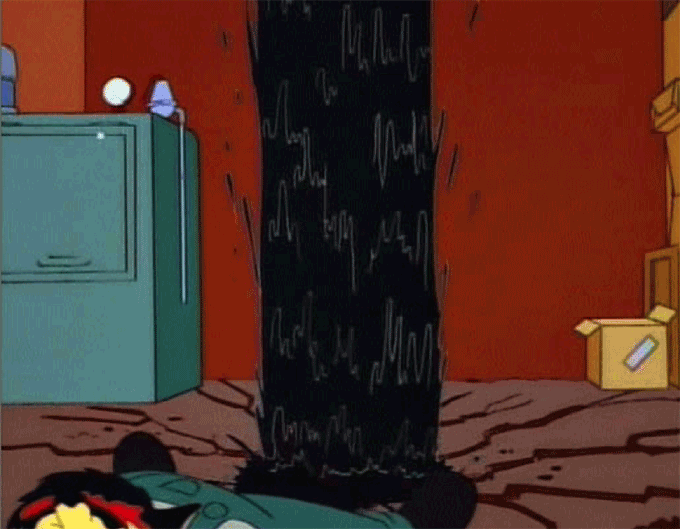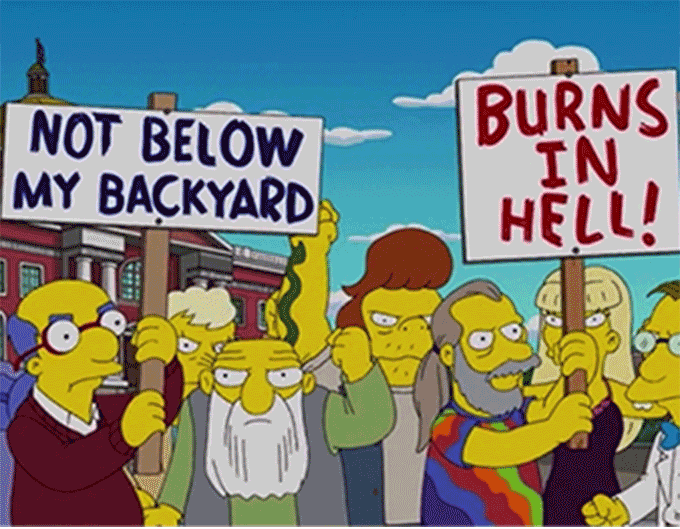March 30, 2015
Public Policy Lessons from The Simpsons #3
Some of the most challenging questions facing Canada today concern developing our natural resources, especially oil and gas. In particular, Canada is grappling with volatile resource prices impacting the economy and government fiscal positions, and the social and environmental impacts of resource development. Like nearly all policy issues under the sun, The Simpsons has been there before.
In Springfield, most things are stuck in time. Lisa and Bart remain in 2nd and 4th grades, and Maggie is forever a baby yet to speak. But even if the characters don’t age, the show has managed to capture the changes in our world. By comparing the reaction to oil and gas development projects in a 1995 episode with one from 2014, we can see a shift in societal attitudes towards resource development.
The first time that resource wealth came to Springfield was in the course of the classic episode “Who Shot Mr. Burns? (Part One).” Groundskeeper Willie discovers oil under Springfield Elementary while he is in the course of burying the school’s late, beloved gerbil, Superdude.

21st Century Fox, via www.springfieldspringfield.co.uk
In the days following the discovery, no one asks how long this oil boom might last. Instead, the debate sparked by the discovery mainly involves questions of how to spend the new-found wealth. Principal Skinner promises that “Today, Springfield Elementary embarks on a new era: an era of unbridled spending where petrodollars will fuel our wildest educational fantasies.” For many of the school’s staff, this means new equipment (Groundskeeper Willie requests a crystal slop bucket).

21st Century Fox, via www.springfieldspringfield.co.uk
Environmental concerns are not prominent in this episode — even Lisa, typically the town’s green conscience, is fixated on using the new money to hire jazz legend Tito Puente as a music teacher. We do see some environmental fallout as the drilling damages the Springfield Retirement Castle and fumes close down Moe’s Tavern. However, most of the town is fixated on the appropriate way to spend the gains (a moot discussion when the oil is ultimately stolen by a power-mad Mr. Burns).

21st Century Fox, via www.springfieldspringfield.co.uk
When The Simpsons revisited resource development in 2014’s “Opposites a-Frack“, the town’s focus is quite different. In this episode, Mr. Burns has shifted his operations from slanted oil drilling to fracking — a controversial process to extract natural gas from shale rock formations. This time around, developing the resource is seen as more of a source of danger than of riches.

21st Century Fox, via www.springfieldspringfield.co.uk
The fracking operations make the tap water catch fire and cause earthquakes around town. Mr. Burns’ approach to the townspeople in this case is strikingly different. While obviously still motivated by pure greed — he is Mr. Burns after all — Burns is now operating in a different social context, and can’t take the gas without the town’s support. As Burns’ lead community relations representative, Homer is surprisingly effective. But Marge Simpson remains concerned and her refusal to go along with the rest of the town ultimately stops the project.

21st Century Fox, via www.springfieldspringfield.co.uk
In many ways, these two episodes reflect the primary debates surrounding natural resource development at the time that they each aired. “Who Shot Mr. Burns? (Part One)” aired in the 1990s when there was significant public attention on the way communities benefited from development of their local resources. In many cases this was a reaction to the actions of multi-national corporations in developing countries that were seen as engaging in Burns-like business practices. By comparison, “Opposites a-Frack” aired among the current debates over resource development which are increasingly defined by “social licence” — the idea that major projects should require the positive consent of the local community in order to go forward.

21st Century Fox, via www.springfieldspringfield.co.uk
In a democratic context, winning clear public support for a resource or energy project has become a must-have, not a nice-to-have. Plans for these projects require long-term stability that can outlast changes in the public mood or changes in government. As Mowat work has shown in the past, a failure to establish clear social license for energy plans has led to knee-jerk reactions and policy failures. How projects win social licence, and who has a say in decision-making, are questions underlying some of our biggest natural resource and energy debates today, whether it’s about oil and gas exploration or infrastructure development. As The Simpsons teach us, not sorting out these basic questions can make it very difficult to get things done.
More related to this topic
Author
Noah Zon
Release Date
Mar 30, 2015






